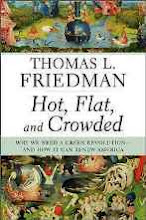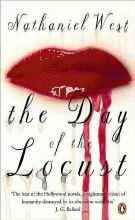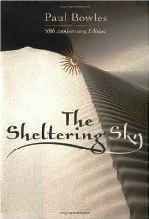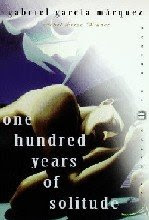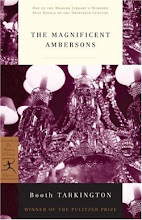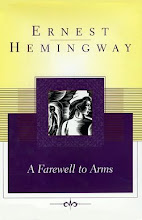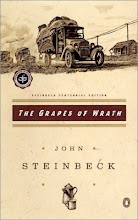“The beginning of knowledge is the discovery of something we do not understand.”
Frank Herbert (1920-1986)
The sounds of the calèche or horse-drawn carriages echo on narrow cobblestone streets, flanked by 18th- and 19th-century greystone buildings as I watch the snow swirl and dance on the sidewalk. December has brought me to Old Montreal for a board meeting. Our hotel is a delightful historic stone structure over 200 years old, which is considered by Conde Naste as the finest hotel in Canada and I have found no reason to disagree. The holiday spirit fills the air as Christmas decorations adorn the restaurants beckoning to come in and sit by the warm fire to indulge in the exquisite French cuisine. Montreal is the world’s second-largest French-speaking city but is also a melting pot of cultures from around the world, as its mosaic of neighborhoods and diversity of restaurants fill Old Town.
As I walk along the St. Lawrence River waterfront under a long allee of snow covered trees, I am following in the footsteps of Jacques Cartier, who became the first European to reach the area now known as Montreal in 1535 when he entered Island of Montreal while in search of the Northwest Passage and gold. Montreal was named for the Island of Montreal, which in turn was named for Mount Royal a mountain, immediately north of downtown Montreal. As I turn my back to the river the historic facades of Old Montreal frame the dome of the Gothic Revival Notre-Dame basilica which is renowned for the dazzling opulence of its interior. Within an hour I’m completely at home in this beautiful city which is as close to being in Europe as you can find on the North American continent.
Half of our board members are Canadians, who are intent in sharing every aspect of Montreal culture, which makes the stay even more special. Our first new delight was traveling across town to have lunch at the finest Poutine restaurant in Montreal. None on the Canadians would explain what Poutine was as we huddled in the cab. All they would say in that you can’t adequately describe Poutine, it needs to me experienced. A few of the more fussy Americans are concerned when they could not discover the origin of Poutine. In preparation for not partaking in this mystery food, one board member states “I just want you to know there are things I will not eat.”
Curious the Canadian guide begins to prompt the board member on what types of food are off the list?
“Well I don’t eat any type of animal organs.”
Everyone stuffed in the cab breaks out into laughter as the Canadian responds “By God what type of barbarians are you Americans?”
The cab pulls up to a small nondescript small lunch counter in a blue collar neighborhood as we pour out of the backseat and head inside. The interior resembles an old dinner with chrome 1950 style tables and chairs. Everyone inside has the same large dish of Poutine in front of them along with a coke. Poutine is a French-Canadian food that slightly resembles American Gravy Cheese Fries (Uuukkkk), but is actually very, very different in many respects. Poutine is readily-available across Canada, but as locals say it only really tastes good in French Quebec.
According to legend Warwick Quebec is the place where Poutine was invented back in 1957 by restaurateur Fernand Lachance, who died leaving not only his calorific imprint but also some serious questions about the low-carb fuss. Poutine is Acadian slang for mushy mess and is best described as a heart attack in a bowl. By the way, there is a proper way to pronounce poutine, and it's not 'poo-teen'. The phonetic pronunciation is 'peu-tin', which always elicits a vacant stare when one orders it using that word.
The French Fries - The potatos must be hand-cut and very fresh. Fast-food-type fries will not taste quite as good. Also, you must fry the potatoes in pure lard. Vegetable oil and other politically-correct oils spoil the unique taste.
The Gravy - French-Canadian gravy (also known as BBQ Chicken Gravy) is very different than American gravy. First of all, it is very dark and thick, like molasses. Secondly, it has a very flavorful taste which cannot be described...very much like pepper and vinegar and other 'magical' ingredients. Apparently if you can stand a spoon straight up in it, it's good!
The Cheese - The cheese is the most important part of good Poutine. You must use fresh white, cheddar cheese curds. These curds have a taste and texture very different than actual cheddar cheese. The cheese curds actually squeak in your teeth as you bite them.
The overflowing plates of Poutine arrived at the table without ceremony. Poutine is a French Canadian equivalent of comfort food for a winter day. It was a delightful treat, but I’m not sure I’ll need to experience Poutine again anytime soon as it was almost impossible to finish the excessively oversized portions. I did notice that the fussy Americans seemed to like the Poutine the best while constantly asking “No really what is cheese curds made from?”
The following night for dinner we were treated to one of the top 10 restaurants in Canada which specialized Portuguese Italian fusion food. The restaurant was in a nondescript trendy urban neighborhood which had a lot of street life. The interior of the restaurant was very euro clique and only seated about thirty people. Our crowd of eighteen completely took over the restaurant as we joked with the owner. We allowed the owner to serve us anything he wanted as the plates of incredible food rolled out of the kitchen. There was grilled octopus in a wonderful rich smoky lentil stew, grilled whole squid marinated in olive oil and vinegar, smoked spicy Chorizo sausage, plates of cheese and grilled vegetables, tender lamb shanks in a lemon reduction, cubed pork with clams in a spicy tomato sauce, tiger prawns and scallops. This type of gourmet dining is the standard reward for donating time all year to the organization and the group was reveling in the hospitality, friendship and food. We spend the entire time in the restaurant in a ruckus debate of the differences between Canadian and American culture. “Ya know what I mean, eh?”
Our Canadian guide finally leaned over to me and said “Let me order you an after dinner drink, something I only drink here in Quebec.”
A short time later the owner brings two glasses of ice and two small beakers of a clear liquid. As he pours the clear liquid over the glass of ice it turns cloudy with a pale lime green tint. My guide holds his glass up in a toast and whispers “Pernod, my friend. Remember I graduated from McGill University just down the road here in Montreal and it’s my tradition for you.” As I sipped the Pernod , the leading characteristic was a licorice flavor, which is produced with anise.
According to the Pernod Company, “We owe this elixir to "Docteur Ordinaire", a French doctor in exile in Switzerland. In 1805, the Pernod Fils Company from Pontarlier in France began distilling the secret formula. From 1830 on, artists took to this elixir in the cafés of Paris. "Green fairy" to artists and poets seeking new pleasures, absinthe became one of the strongest symbols of its era with its enigmatic color and the ritual surrounding it. It is sublimated in the works of Verlaine, Rimbaud, Baudelaire, Oscar Wilde, Manet, Toulouse-Lautrec, and later Picasso.”

Seduction by The Green Fairy (cira 1885)
With the new temperance movement growing around the world at the turn of the century, many prominent French politicians and scientists turned their interest to France's new, most popular alcoholic beverage: absinthe. Absinthe was the subject of much stormy, impassioned debate, and was banned in 1915 in France. Today, with the legalization of Thujone and Absinth Wormwood in alcoholic beverages in the European Union, the Pernod Company has attempted to recreate what they thought would be the new Pernod-Fils absinthe.
Once we began drinking Pernod there was no stopping the group. The “Green Fairy” took control as we laughed and carried on until after 1:00 am. I one point I think I actually began speaking French. Since it was the last night the group was going to be together we decided to stop at a bar across the street from the hotel, for one final Pernod.
Outside the bar there was a steep series of steps leading to the door. I became accustom to the collection of young women hanging outside the bar door since smoking was banned in all buildings. As we passed the girls I reached for the door and pulled it. It can’t be closed there are a number of people visible from the windows, so I pulled harder assuming it was stuck. All of a sudden I hear the girls next to me giggle and start saying “Pussy, pussy, Monsieur.” Each time they repeated it then would once again begin giggling at us. I thought to myself that the women are quite accommodating here in Montreal, embarrassed to look for fear they might be serious. I smile and utter “Yes, Yes very nice, Mademoiselle.” It this response they all broke into laughter as one of the girls reaches over and points at a small sign above the door which says “Poussé” It only takes a second for my high school French to kick in as I translate the word as “Push” in English. I guess I’ve had enough of the Green Fairy and turn away from the door explaining to the young women that if we are unable to enter the bar on our own we should call it a night. As I say goodbye to the group, I can’t wait to return to this delightful city and experience some more Poutine, Pernot and Poussé.
“Custom is the great guide of human life.”
David Hume (1711 - 1776)

















